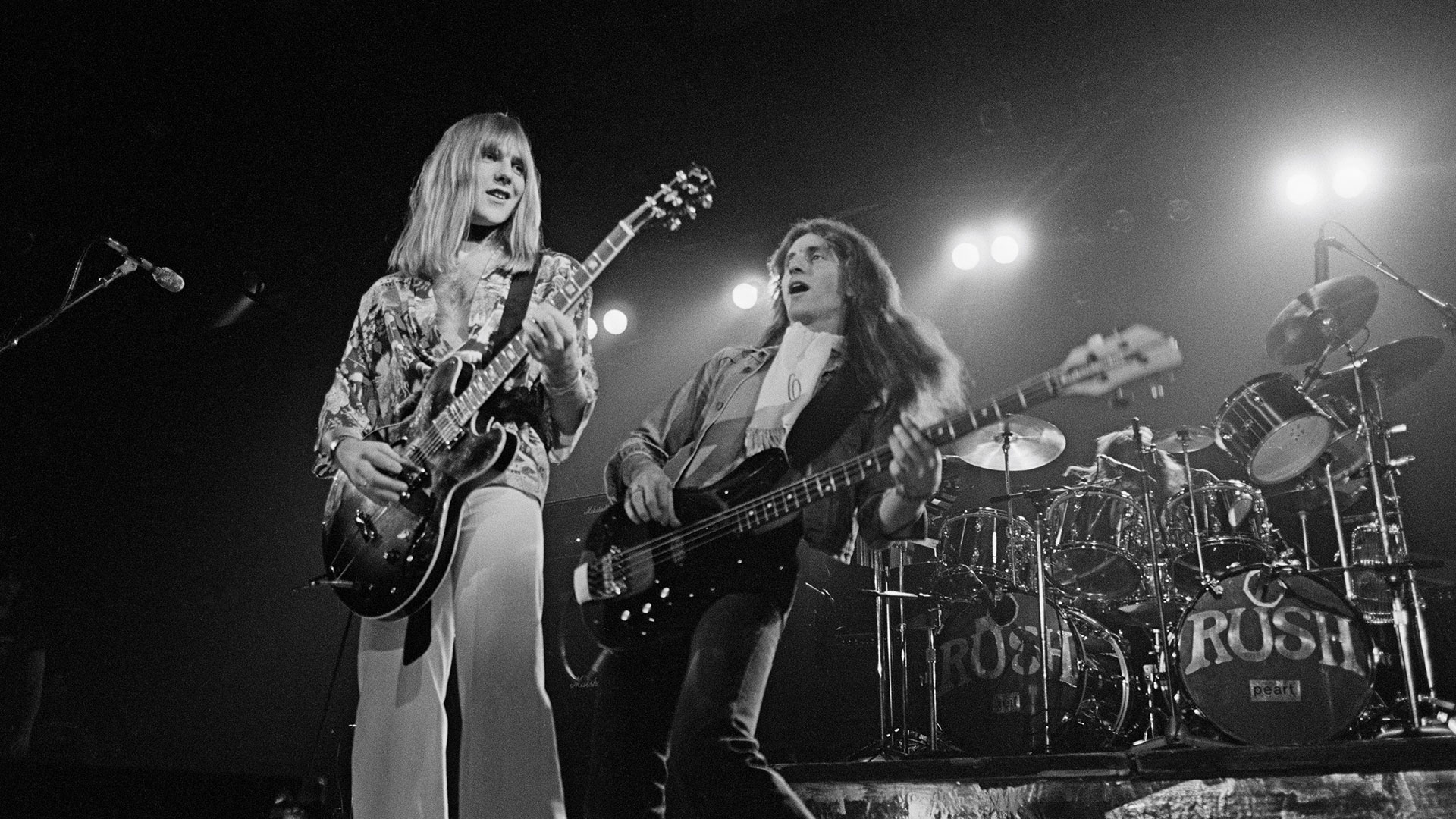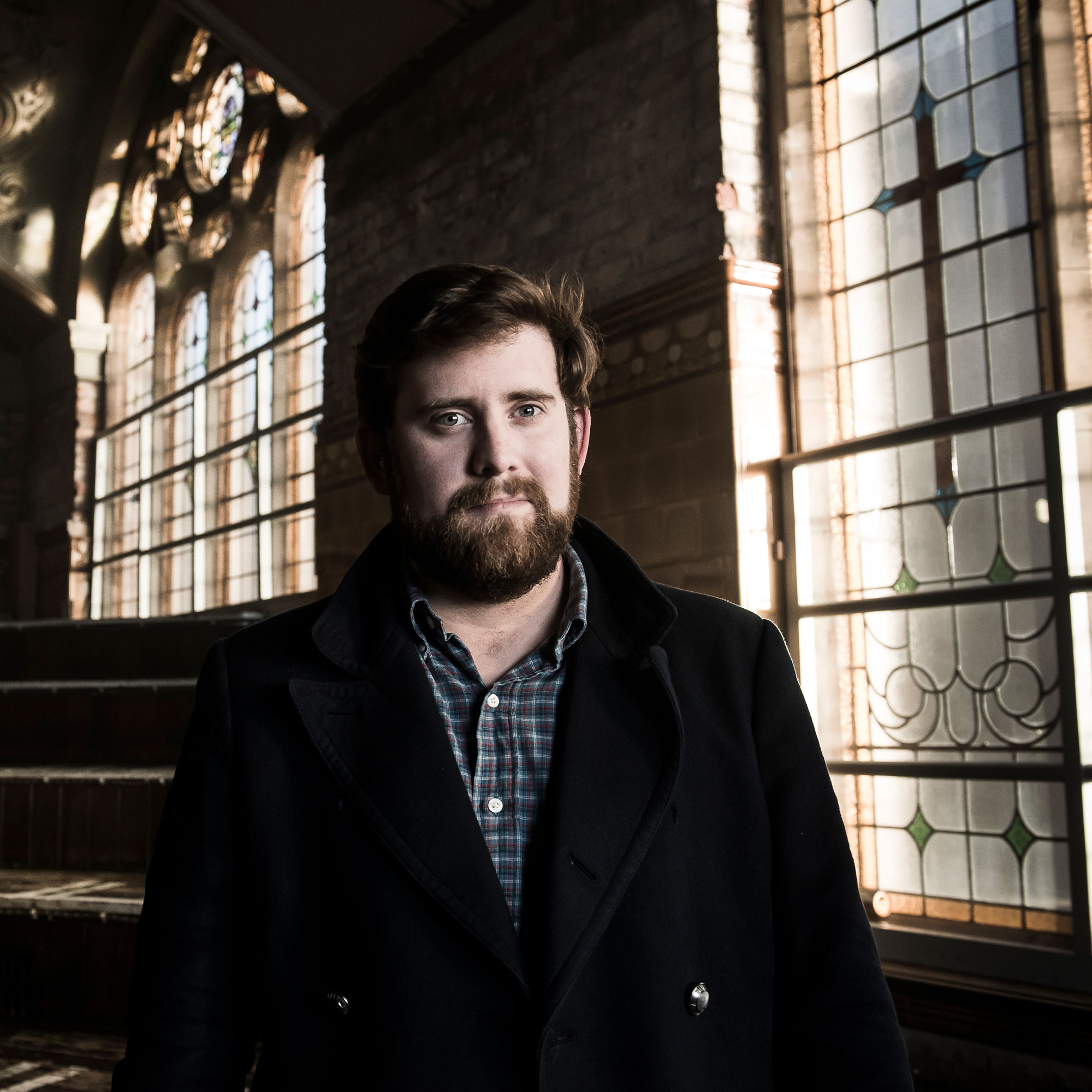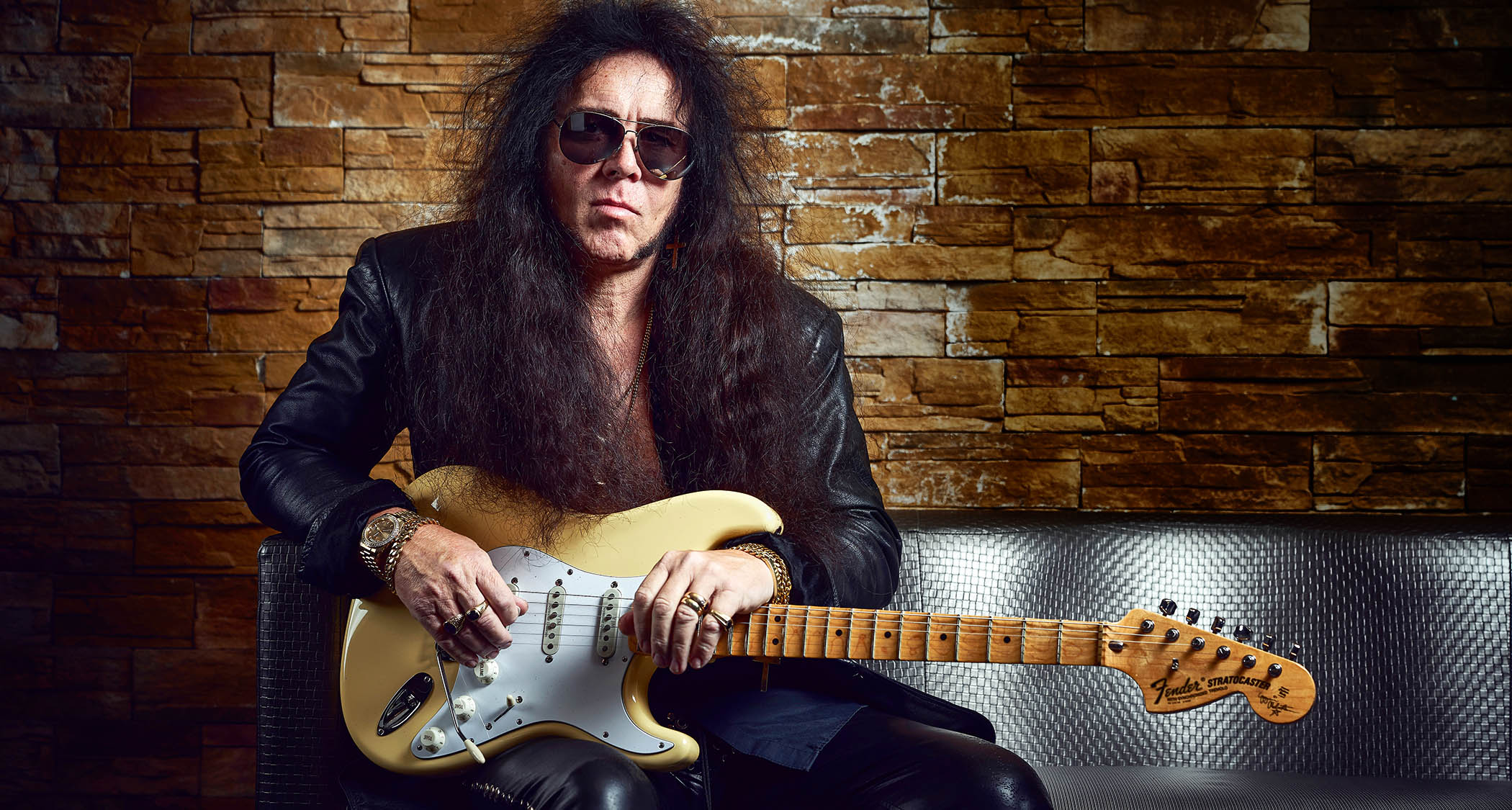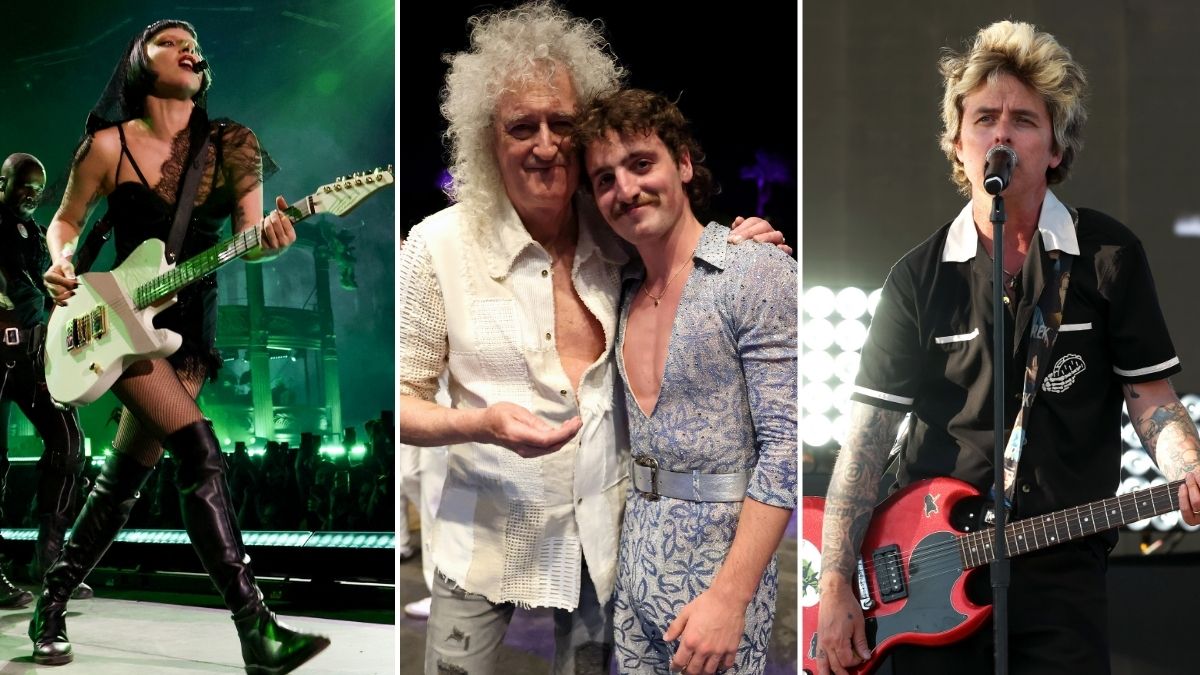Alex Lifeson says he first chose an ES-335 over the Les Paul for this reason
In a new clip with Gibson TV, the Canadian guitar legend has been discussing days spent haunting guitar stores before Rush made it big

Alex Lifeson sat down for a chat with Gibson TV recently and, coincidentally, took to discussing his history with the firm’s guitars, most notably his very first one: an ES-335.
In the clip, the guitarist recalls spending every Saturday haunting the aisles of Toronto music store Long and McQuade’s in his pre-Rush days, aged 13-15.
“I would sit on an amp and I’d pull a guitar down and I would play for about an hour until the salesman came over and said, ‘Okay kid, beat it!’” recalls Lifeson. “Then I’d come back the next Saturday… and this would go on for weeks and weeks and weeks.”
The hard-won experience gave Lifeson good insight into a tier of electric guitars that were initially far out of grasp for his teenage self.
“I played an ES-335, an SG, a Les Paul – those instruments were just amazing to me. Like a Les Paul, for example, there was so much history in that shape and the players that played that guitar. The SG was the same thing. I was a fan of Eric Clapton’s and he had that beautifully painted SG of his.”
However, it was the ES-335 that first appealed to Lifeson above the others. “You had Jorma Kaukonen from Jefferson Airplane and Alvin Lee and B.B. King – they were all ES players,” explains the prog guitar icon.
“And there was something that was sort of unique about that guitar in a rock context. It didn't seem like a rock guitar, like a Les Paul or an SG was.”
Get The Pick Newsletter
All the latest guitar news, interviews, lessons, reviews, deals and more, direct to your inbox!
As rock history now tells, Lifeson certainly developed into a unique guitar player himself and – again, not shockingly for a Gibson clip – the Rush man credits his first ES-335, acquired from a friend of Rush’s original drummer John Rutsey, as playing a major role in his his evolution.
“I bought that guitar and I started playing it every waking minute that I had,” remembers Lifeson. “I just couldn't stop playing it. I couldn’t believe how easy it was to play… the neck felt so much smoother, the action was so much lighter and easier.
“I really looked forward to playing that -335 and I remember coming home from school every day and playing until dinner time. Then I said, ‘Forget about homework, I'll just play guitar.’”
The ES-335 would remain Lifeson’s go-to instrument throughout the band’s early years and saw him through many a bar gig. It was only when Rush got signed that its position in the pecking order became less secure.
At that point, Lifeson says he had the satisfying opportunity to bring things full circle, with a return to the store that had put up with him for all those Saturday afternoons.
“Of course, once we got our advance on our record deal, we went shopping at Long and McQuade’s!” says the Rush guitarist. “I ended up buying my first Les Paul, which was a Les Paul Deluxe. That was so cool. Doing that that was like a dream come true for for any young musician, I think.”
You might not find him playing so many shows these days, but Lifeson’s spent his post-Rush years working on his own project Envy of None.

Matt is Deputy Editor for GuitarWorld.com. Before that he spent 10 years as a freelance music journalist, interviewing artists for the likes of Total Guitar, Guitarist, Guitar World, MusicRadar, NME.com, DJ Mag and Electronic Sound. In 2020, he launched CreativeMoney.co.uk, which aims to share the ideas that make creative lifestyles more sustainable. He plays guitar, but should not be allowed near your delay pedals.
“It holds its own purely as a playable guitar. It’s really cool for the traveling musician – you can bring it on a flight and it fits beneath the seat”: Why Steve Stevens put his name to a foldable guitar
“Finely tuned instruments with effortless playability and one of the best vibratos there is”: PRS Standard 24 Satin and S2 Standard 24 Satin review











